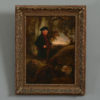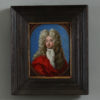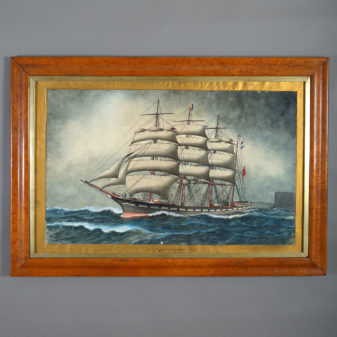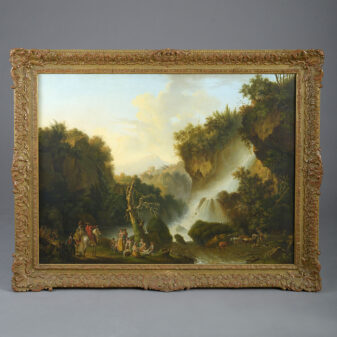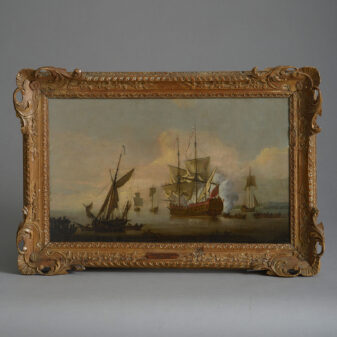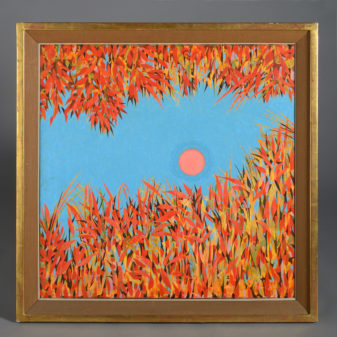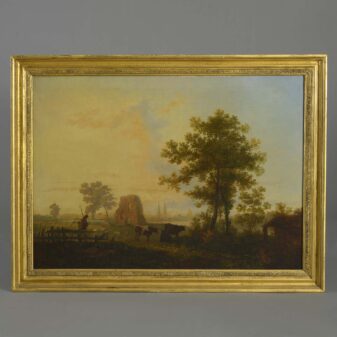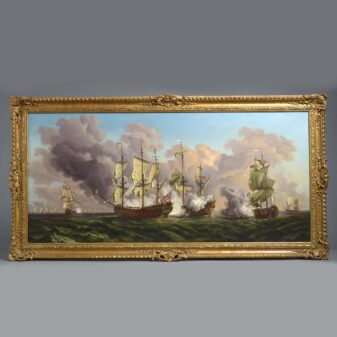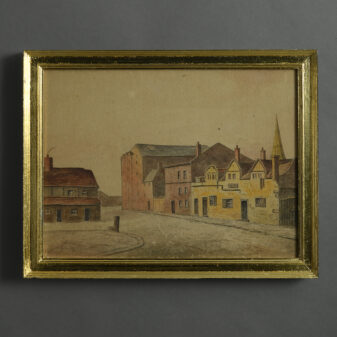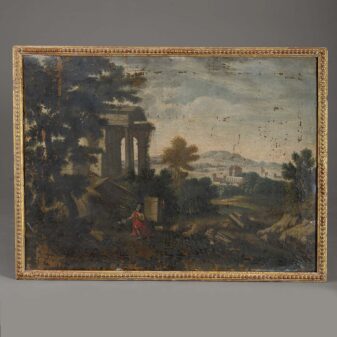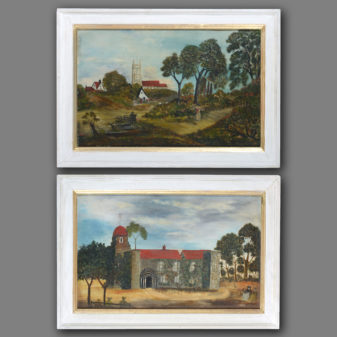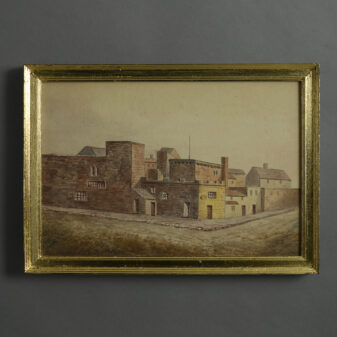An Architectural Palazzo View, Follower of Niccolo Codazzi
£6,500
SOLD
Niccolo Codazzi (1648-1693) was the son of Viviano, possibly the greatest of the Italian vedute painters of the seventeenth century. He very much continued the work initiated by his father of producing architectural scenes, capricci and ruins. He is known to have been in Rome from 1675 and painted the piano nobile of the Palazzo Altieri al Gesù and later whilst in France collaborated on the Queen’s grand staircase at Versailles. His subject matter and style of painting show the growing popularity of Classical Rome with collectors in the 17th century but despite his popularity, competition was fierce, resulting in many years in France.
This fine architectural vista within the environs of a palazzo displays well the type of scene which Codazzi excelled at. In this instance the painter has achieved the strong chiaroscuro which he was noted for and further combined this with majestic elements of grand baroque design resulting in a carefully balanced and urbane order both in structure and colour. This is further enhanced by the carefully considered groups and individuals within the composition whose presence draws the eye and subtly enlivens the scene.
The capriccio or architectural fantasy is regarded as having come to prominence through the skill of Viviano Codazzi as well as Marco Ricci who enjoyed popular success with his imagined views of ruins when he came to England in 1710. The style was later developed by Giovanni Paolo Panini (b.1691 – d.1765) whose works of Rome included views of the architecture arranged as pictures in a gallery. In the 1740s, Giovanni Battista Piranesi created a famous series of engravings entitled ‘Prisons (Carceri)‘ which, instead of the idealised and tourist-friendly views of Rome, created an imagined labyrinth of vaulted, subterranean spaces dramatically lit. The creation of entirely imagined spaces moved the art of the capricci out of strict reality and gave artists the space to dream any number of fantastical schemes.
Such compositions were avidly sought by travellers embarking on the grand tour across the continent and were stable pictures in many English country house collections of the 18th century.

